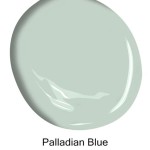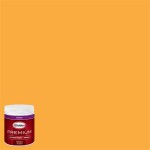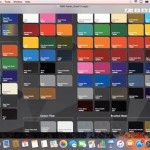How To Find Your Car's Paint Color Code
Finding the correct paint color code for a vehicle is essential for various reasons, primarily when conducting bodywork repairs, touching up scratches, or repainting entire panels. Using the precise color code ensures a seamless match between the new paint and the existing finish, maintaining the vehicle's aesthetic appeal and potentially its resale value. The task of finding this code can seem daunting, but it is generally a straightforward process once understood. Several common locations are used by manufacturers, and utilizing online resources and dealerships can often prove beneficial.
The paint color code is a unique alphanumeric identifier assigned by the manufacturer to specify the exact formulation of a vehicle's paint. This code goes beyond simply identifying the color name (e.g., "Royal Blue") and pinpoints the specific pigments and ratios used to create that shade. Variations in paint formulations, even within the same color name, can exist between different manufacturers or even different model years from the same manufacturer. Therefore, relying solely on the color name is insufficient for achieving an accurate paint match. The color code allows paint suppliers to mix the precise formula needed for a perfect blend.
Ignoring the color code and attempting to match the paint visually can lead to noticeable discrepancies. Factors like the age of the existing paint (which may have faded or oxidized) make visual matching unreliable. Differences in lighting conditions during the matching process can also contribute to inaccuracies. A mismatched paint job can detract from the vehicle's appearance, reduce its value, and potentially necessitate a costly repaint.
Typical Locations for the Paint Color Code
Automobile manufacturers commonly place the paint color code label in several strategic locations throughout the vehicle. These locations are generally chosen for their accessibility and durability. Understanding these common locations is the first step in locating the code.
Driver's Side Door Jamb: This is one of the most frequent locations. The label is usually affixed to the door jamb, which is the vertical surface of the car's frame where the door latches. Open the driver's side door and inspect the jamb carefully. The label may be on the door itself, the frame, or both. The label is often a white or silver sticker containing various vehicle information, including the VIN (Vehicle Identification Number), tire pressure recommendations, and the paint color code.
Inside the Glove Compartment: Another common location is inside the glove compartment. Open the glove compartment and check the inside surfaces, including the door, the sides, and the back. The label may be affixed directly to the compartment's surface or tucked into a small pocket. In some cases, it might be printed directly onto a sticker containing a barcode.
Under the Hood: The engine compartment can also house the paint color code label. Look for the label on the firewall (the partition separating the engine compartment from the passenger compartment), the radiator support, or the underside of the hood. This location is less common than the door jamb or glove compartment, but it's worth checking, especially if the other locations prove unsuccessful. Be cautious when searching under the hood, and ensure the engine is cool to the touch.
Spare Tire Well: In some vehicles, the paint color code label can be found in the spare tire well, located in the trunk. Remove the spare tire and inspect the surrounding area. The label may be affixed to the floor of the well or on the inside of the trunk lid. This location is less common but still a possibility, particularly in older vehicles.
Owner's Manual: While not directly on the vehicle, the owner's manual can be a valuable resource. Check the index for terms like "paint code," "color code," or "touch-up paint." The location of the code might be documented within the manual though this often refers back to the label on the vehicle itself.
Once a potential label is located, carefully examine it for the paint color code. The code is usually a combination of letters and numbers, and it may be labeled with terms like "Paint Code," "Color Code," or simply "Paint." Be aware that manufacturers use different formats for their paint color codes, so familiarity with specific manufacturer patterns can be helpful. For instance, some manufacturers use a two- or three-digit code, while others utilize a longer alphanumeric sequence.
Decoding the Paint Color Code Label
After locating a label that appears to contain relevant information, the next step involves correctly identifying and interpreting the paint color code. The format and presentation of the code can vary significantly between manufacturers, requiring a practiced eye to discern the correct sequence from other alphanumeric identifiers on the label.
Understanding Manufacturer-Specific Formats: Different car manufacturers use different conventions for representing their paint color codes. For example, a Ford paint code might consist of two letters, while a Toyota code may be a three-digit number or a longer alphanumeric string. Knowing the make of the vehicle helps narrow down the possible formats and makes identifying the correct code easier. Consulting online resources specific to the vehicle's make and model year can provide examples of typical paint code formats.
Distinguishing the Paint Code from Other Codes: Vehicle information labels typically contain numerous codes and numbers, including the VIN, engine code, transmission code, and interior trim code. It is crucial to distinguish the paint color code from these other identifiers. Look for labels that explicitly mention "Paint Code," "Color Code," or similar terms. The paint code may also be located near a visual representation of the color swatch or a color name description.
Dealing with Multi-Part Codes: Some manufacturers use multi-part paint codes, where the overall color is represented by multiple codes or sub-codes. For example, a vehicle may have a separate code for the primary color and another code for the clear coat. In these cases, both codes may be necessary to achieve a proper paint match. The label may contain instructions on how to interpret the different parts of the code.
Decoding Metallic and Pearl Finishes: Metallic and pearl finishes often have more complex paint formulations than solid colors. The paint code for these finishes may include additional information specifying the type and amount of metallic or pearl pigments used. This information is crucial for achieving the correct shimmer and depth of color in the final paint job. Paint suppliers usually have databases that can decode these complex codes and provide the correct mixing ratios.
Confirming the Code's Accuracy: Once a potential paint color code is identified, it is wise to confirm its accuracy before ordering paint. Cross-referencing the code with online databases or consulting with a paint supplier can help ensure the code matches the vehicle's make, model, and year. Some online resources allow users to enter the VIN to retrieve the corresponding paint color code. This method can be more reliable than relying solely on the label found on the vehicle, especially if the label is damaged or illegible.
Utilizing Online Resources and Dealerships
If the paint color code cannot be located on the vehicle or the label is illegible, alternative methods can be employed to retrieve the information. Online resources and dealerships offer valuable tools and expertise for identifying the correct paint color code.
Online Paint Code Databases: Numerous online databases specialize in providing paint color codes for various vehicle makes and models. These databases often allow users to search by make, model, and year to find the corresponding paint codes. Some databases offer additional information, such as the color name, application notes, and user reviews. While these databases can be helpful, it is essential to verify the accuracy of the information with other sources, such as the vehicle's manufacturer or a professional paint supplier.
VIN Decoders: Several online VIN decoders can retrieve various vehicle information, including the paint color code, based on the vehicle's VIN. The VIN is a unique 17-character identifier assigned to each vehicle. VIN decoders can be particularly useful when the paint color code label is missing or damaged. However, it is essential to use a reputable VIN decoder to ensure the accuracy of the information. Some VIN decoders may require a subscription or fee to access the paint color code information.
Contacting the Dealership: The vehicle's dealership is another avenue for obtaining the paint color code. Dealerships have access to manufacturer-specific databases and can use the VIN to retrieve the correct paint code for the vehicle. Contacting the dealership's parts department is generally the most effective approach. Be prepared to provide the VIN and any other relevant information about the vehicle, such as the model year and trim level. The dealership may charge a small fee for this service.
Consulting with a Paint Supplier: Professional paint suppliers have extensive knowledge of automotive paint and can assist in identifying the correct paint color code. They often have access to color-matching tools and databases that can help determine the code based on visual analysis of the vehicle's paint. Some paint suppliers may offer a service where they use a spectrophotometer to scan the vehicle's paint and generate a color code. This method can be particularly useful for older vehicles where the original paint has faded or oxidized. Be prepared to provide the paint supplier with as much information as possible about the vehicle, including the make, model, year, and VIN.
Documenting the Findings: Once the paint color code is successfully identified, it is essential to document the information for future reference. Note the code, its location on the vehicle (if applicable), and the source of the information (e.g., dealership, online database). This documentation can be helpful when ordering touch-up paint or conducting more extensive bodywork repairs in the future.
How Do I Find The Paint Code For My Car Part

How To Find Your Car Color Code Match Paint By Vin

How To Find Your Vehicle S Color Code For Touch Up Paint

How To Find Car Paint Code Locations On Most Cars

How To Find A Paint Code On Any Vehicle Fast All Models

Paint Code By Vin Where And How To Find Number

How To Find Your Paint Code Partify

How To Find Your Car Color Code Match Paint By Vin

How To Find The Color Code Of Vehicle

How To Find Car Paint Code With Vin Number Paintnuts
Related Posts








